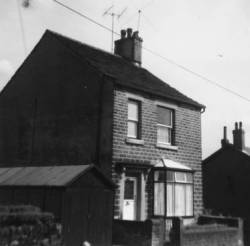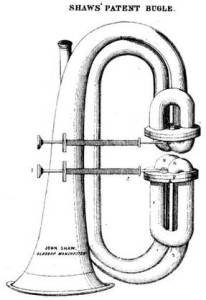| The writer of the letters is thought to be Edward Hadfield, born in November 1865 to Thomas and Emma Hadfield of Willow Grove (see Hadfields of Willow Grove), who moved to Oldham in the early years of the 20th century and died there in 1953. Willow Grove itself has an interesting history, having been a beer house run by Edward's grandparents, Thomas and Ellen. Hamnett wrote of, perhaps, its strangest event - a funeral that was long remembered, and caused a sensation at the time. This was the funeral of Jam' o' Jonathan's. He was a carpenter (shown as a carpenter and farmer in Glover's directory of 1829) called James Wood (see Jam o' Jonathan's), and was the son of Jonathan Wood of Padfield. James had been baptised at Glossop Parish Church on 4 July 1773 but was (in Hamnett's words) a property owner and an infidel. However, when James died on July 15 1850 he still had to have a funeral – and that had to be at Glossop Parish Church. Although James left no will (administration of his estate was granted to his sister Ann, wife of Robert Booth, farmer of Coombs) he apparently ordered that the mourners attending his funeral were to have as much drink as they wanted. The funeral procession was to stop at Mrs Ellen Hadfield's, the Willow Grove Inn on Woodhead Road, on the way from Padfield to Glossop. On arrival the coffin lid was to be taken off and the corpse was to have as much ale as the body would hold, which was done. A tun dish was obtained, placed in his mouth and ale poured down. The mourners (naturally there were many of them because of the free beer on on offer) were so drunk on arrival at the Church, that the curate, the Rev. John Stone, refused to inter the corpse owing to the mourners' want of reverence. The corpse was left and buried next day, but no mourners attended.
| 
Willow Grove, the former Willow Grove Inn |

